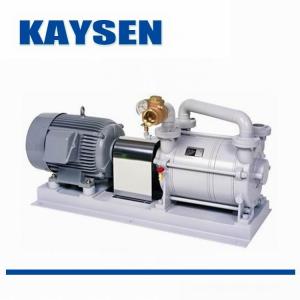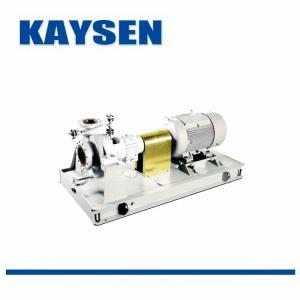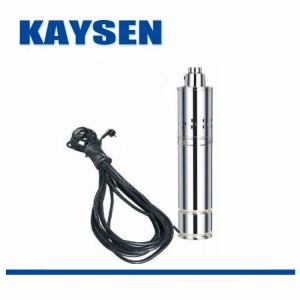
|
- 品牌:德国KAYSEN
- 发布日期: 2020-07-16
- 更新日期: 2025-11-17
| 外型尺寸 | |
| 品牌 | 德国KAYSEN |
| 货号 | |
| 用途 | 水、油 |
| 型号 | KAYSEN |
| 工作压差 | |
| 压力环境 | 常压 |
| 介质温度 | 250℃ |
| 驱动方式 | 气动 |
| 适用介质 | 水 |
潜油电泵
“ KAYSEN是工业行业的可靠解决方案合作伙伴,并且是化学液处理的组件和系统的制造商。基于我们的创新产品,服务和针对特定行业的解决方案,我们为全球客户提供了更高的效率和安全性。”
"Kaysen is a reliable solution partner for the industrial industry and a manufacturer of components and systems for chemical liquid treatment. Based on our innovative products, services and industry-specific solutions, we provide higher efficiency to customers worldwide And security."
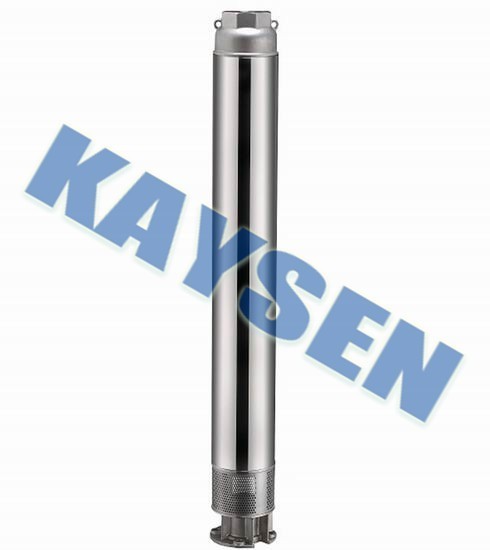
潜油电泵——上海总代理
我们的目标
为客户提高效率和安全性
我们在全球的市场水处理和化学流体处理
我们的报价
组件,系统,服务和行业特定的解决方案
我们的价值
可靠性
革新
解决方案驱动
全球
Imported pneumatic diaphragm pump——Shanghai distributor
Our goal
Improve efficiency and safety for customers
Our global market water treatment and chemical fluid treatment
Our offer
Components, systems, services and industry-specific solutions
Our value
reliability
innovation
Solution driven
global
KAYSEN凯森潜油电泵概述
凯森潜油电泵机组是一种机械采油设备。潜油泵是一种多级离心泵,每一级由一个旋转的叶轮和一个固定的导轮组成,叶轮分浮动和压紧两种,叶轮的结构决定泵的排量,叶轮的级数决定泵的扬程,在油井中潜油电机将机械能传递给潜油泵,潜油泵内的叶轮高速旋转,将原油从井中抽送到地面集油系统。潜油电泵原以三大公司引进,经改造开发了各种系列,并获得了较高的泵效、扬程及流量。
主要特点:
● 大排量采液是这种采油方法的主要优点。但是,目前潜油电泵也经常应用于产液量比较低的油井。
● 这种泵能够把油井中位于上部水层的水转注到下部的注水层中。
● 操作简单,管理方便,在市区应用有得于美化环境、减少噪音。
● 能够较好地运用于斜井、水平井以及海上采油。
● 容易处理腐蚀和结蜡。
● 容易安装井下压力及温度等测试装置,并通过电缆将测试信号传递到地面,进行测量读数。
● 为适应油井产量递减或发生变化,可采用变频装置调节电源频率来实现,但投入费用较高。
● 免修期较长,油井生产时效相对比较高。
主要应用:
广泛应用于水、温泉、油田、炼油、石油化工等介质。
使用条件:
●环境介质温度:≤150℃;油井温度:50~180℃。温度小于90℃,O型密封圈一般采用丁腈橡胶,叶轮上的止推垫片,一般采用酚醛层压玻璃布板,高于90℃的油井,O型密封圈一般采用氟橡胶(170℃),叶轮上的止推垫片一般选用F4聚苯(150℃)。
●含气量:潜油泵在油井工作时是完全浸在井液中的。油井中往往含有不同种类的游离气体,游离气体对潜油泵的工作特性会产生严重影响,当达到一定量时则发生气锁,气体干扰严重影响潜油电泵的正常工作,使电机负载急剧变化或卸载,可在潜油泵的下面安装油气分离器。
●井液含砂量:≤0.05%,含砂量:潜油泵在油井中抽汲井液时,要求井液中含砂不超过0.05%。
●适用介质:油水或油气水三相混合物,在吸入口压力条件下,气体量占三相总体积流量的0~30%;
●井液粘度:≤7mm2/s;
潜油电泵现场管理和故障处理:
1.1 设备检查部位
(1)控制柜的检查:运行中接触器是否吸合稳定、振动噪音是否正常;电流记录仪是否准确,卡片上电流数与仪表量程是否一致;
(2)变压器的检查:声音、油位油色是否属正常现象;高压开关接触良好与否,刀片吃入深度要大于80%;
(3)井口检查:井口放气阀,油表等是否齐全;闸门开关有无锈蚀,是否灵活等。
1.2 电泵井投产后的管理要求
(1)电泵井正常操作由值班采油工操作,发生故障时必须由持有电泵操作证书的专业人员处理;
(2)机组投入正常运行后,注意更换电流卡片,为确保记录的准确性,在投产前或各种原因停机时应进行电流记录仪零位校正;
(3)做好各项信息的更新的工作。
1.3 电泵井清蜡
在电泵井投产后一周内应进行一次清蜡通井,并根据具体情况制定合理的清蜡周期。清蜡操作要保质保量,应做到起下顺利、不带硬蜡、不顶钻、不堵井筒等事项,在清蜡结束后要建立相关的工作台账。
2 潜油泵电流卡片分析及故障处理
潜油泵井电流卡片是反映潜油泵运行过程中时间与潜油电机的电流变化关系曲线,它是潜油泵井日常生产管理的主要依据。正常的电流卡片中,电流曲线应为一条平滑的曲线。
2.1 泵在受气干扰中运行的电流卡片
原油脱气,大量气体进泵引起电流波动,导致产量下降。防止方法为:在泵吸入口加气锚或旋转式油气分离器;合理控制套管气;保证机组合理的沉淀度;井液中加入一定量的破乳剂。
2.2 过载停机的电流卡片
机组启动后,电流逐渐上升到额定电流值正常运行;随后逐渐上升,*达到过载电流整定值,过载停机。预防及处理方法:正常过载停机应进行洗井;下泵前冲砂,出砂井上提机组;定时清蜡和热洗地面管线;处理缺相,或更换机组。
2.3 电压波动
当供电电压波动时,为了满足泵的功率需求,马达电流也会随之波动。原因为供电线路上大功率柱塞泵突然启动引发电压瞬时下降、附近抽油机井多口同时启动,或是有雷击现象。防止办法:在大面积断电后,等其他设备启动后再启泵,并装上避雷设备。
2.4 供液不足
由于地层供液不足,泵抽空最终过载关停,系统会自动重启。当电流降低,产液量和泵效就会降低,直至无液进泵,导致欠载停机。原因是在电泵井投产初期,选泵不当,或在生产一段时间后,油井供液。处理办法:缩小油嘴;加深泵挂;更换小排量的机组。
3 潜油电泵的其它故障的判断与处理[2]
3.1 管柱漏失判断与处理
当发生管柱漏失时会出现油压、产量相对下降。带有泄油阀管柱的井,多数是由泄油销被砸断或冲蚀引起,须检泵作业才能恢复生产;管柱腐蚀漏失的井,可通过管柱憋压的验证方法来判断。
3.2 停机后再启动电流加大
稠油电泵井停机后重启电流会加大,致使机组被烧毁,此现象在冬季会更加明显。油井在停产后温度降低,油变稠、流动性变差,泵提速变慢,电泵长时间处在高转速下运行,电流很高,导致寿命变短。可采用变频集中切换技术,用一台变频机对多井口进行控制,使每口井实现软启动。投资不大可减少启泵烧机,原油温度的逐渐升高也可减轻原油粘度对泵的影响。3.3 电缆故障诊断与处理
电缆发生故障表现为地面控制柜过载停机,有时配电盘跳闸电流卡片上的电流曲线突然上升,与电机电气损坏相似,在进行检测时,三相对地绝缘电阻为0,电阻平衡。电缆损坏有两种情况:一是在井口或油管挂处损坏,直阻不超过1Ω;二是远离井口,直阻为2-3Ω,具体损坏处可根据每米电缆的阻值进行测算得出。对于在井口损坏情况,可重新接缆;如果在采油树帽下到几根油管处,可上提油管重新接缆;若损坏很严重,必须检泵作业。
3.4 井液引起的故障与处理
这种情况可能发生在井液含砂泥等机械杂质井、电泵试油勘探井、防砂完井生产的新井中。表现是运行电流高、有波动,当超过过载设定值时过载停机,也有可能堵塞油嘴。对于防砂完井生产的新井,原因是完井作业后填砂未冲洗干净,可采取以下办法解决:上调过载设定值;调大油嘴;停机进行反冲洗。
3.5 套管气引起的故障诊断与排除
当油井供液不足时,引起油井液面很低接近泵吸入口,套管环空内的气体进入电泵内导致欠载停泵。处理这种情况有以下几种办法:
(1)控制套压、调低欠载设定值;
(2)间歇生产,采取人工或控制柜自动启泵方式;
(3)若泵挂较浅,可加深泵挂深度;
(4)调低欠载设定值、缩小油嘴;
(5)对油层进行酸化、压裂等增产措施;
(6)打开未开采层位生产,补充液源;
(7)更换与油井相配的电泵泵。
3.6 机组匹配不合理引起的故障判断与处理
若电泵机组匹配不合理,也可能引起故障。一是出现“大马拉小车”现象,一般不会引起事故,但当电机余量大时会发生欠载;二是出现“小马拉大车”现象,运行电流会高于额定电流,严重时会出现启动困难和机组烧毁现象。当出现这些情况时,只能待检泵作业时更换合适的电泵机组。
Germany Kaysen imported submersible oil pump overview
The German Kaysen submersible electric pump unit is a kind of mechanical oil production equipment. Submersible pump is a multi-stage centrifugal pump, each stage is composed of a rotating impeller and a fixed guide wheel, the impeller is divided into two types: floating and compression, the structure of the impeller determines the displacement of the pump, and the number of stages of the impeller determines the pump The submersible motor in the oil well transfers mechanical energy to the submersible oil pump. The impeller in the submersible oil pump rotates at high speed to pump crude oil from the well to the surface oil collection system. The submersible electric pump was originally introduced by three major companies in the United States, and various series have been developed through transformation, and high pump efficiency, head and flow have been obtained.
main feature:
● Large displacement fluid production is the main advantage of this oil production method. However, submersible electric pumps are also often used in oil wells with relatively low fluid production.
● This pump can transfer the water in the upper water layer in the oil well to the lower water injection layer.
● Simple operation and convenient management, which can beautify the environment and reduce noise in the urban area.
● It can be well used in inclined wells, horizontal wells and offshore oil production.
● Easy to deal with corrosion and wax formation.
● It is easy to install downhole pressure and temperature test equipment, and transmit the test signal to the surface through the cable for measurement reading.
● In order to adapt to the decline or change of oil well output, frequency conversion device can be used to adjust the power supply frequency, but the investment cost is higher.
● The maintenance-free period is longer, and the oil production efficiency is relatively high.
main application:
Widely used in water, hot springs, oil fields, oil refining, petrochemical and other media.
Conditions of Use:
●Ambient medium temperature: ≤150℃; oil well temperature: 50~180℃. When the temperature is less than 90℃, the O-ring is generally made of nitrile rubber, the thrust pad on the impeller is generally made of phenolic laminated glass cloth, and the oil well is higher than 90℃. The O-ring is generally made of fluorine rubber (170℃) ), the thrust pad on the impeller is generally selected from F4 polystyrene (150℃).
● Gas content: Submersible oil pumps are completely immersed in well fluid when working in oil wells. Oil wells often contain different kinds of free gas. Free gas will have a serious impact on the working characteristics of submersible pumps. When a certain amount is reached, an air lock will occur. Gas interference will seriously affect the normal operation of submersible electric pumps and cause the motor load to change drastically. Or unload, you can install the oil and gas separator under the submersible pump.
●Sand content of well fluid: ≤0.05%, sand content: When submersible pump pumps well fluid in oil well, it is required that the sand content in well fluid should not exceed 0.05%.
●Applicable medium: oil-water or oil-gas-water three-phase mixture. Under the pressure condition of the suction port, the gas volume accounts for 0-30% of the total volume flow of the three phases;
●Viscosity of well fluid: ≤7mm2/s;
On-site management and troubleshooting of submersible electric pumps:
1.1 Equipment inspection site
(1) Inspection of the control cabinet: whether the contactor is stable during operation, whether the vibration noise is normal; whether the current recorder is accurate, and whether the current number on the card is consistent with the instrument range;
(2) Check the transformer: whether the sound, oil level and oil color are normal; whether the high-voltage switch is in good contact or not, the blade should be deeper than 80%;
(3) Wellhead inspection: whether the wellhead bleed valve, oil gauge, etc. are complete; whether the gate switch is corroded, whether it is flexible, etc.
1.2 Management requirements after the electric pump well is put into production
(1) The normal operation of the electric pump well is operated by the oil producer on duty. When a fault occurs, it must be handled by a professional who holds an electric pump operation certificate;
(2) After the unit is put into normal operation, pay attention to replacing the current card. In order to ensure the accuracy of the recording, the zero calibration of the current recorder should be carried out before commissioning or when the machine is shut down for various reasons;
(3) Do a good job of updating various information.
1.3 Electric pump well cleaning wax
Wash cleaning should be conducted once a week after the electric pump well is put into production, and a reasonable wax cleaning cycle should be formulated according to the specific situation. The wax cleaning operation should maintain quality and quantity, and should be smooth, with no hard wax, no top drilling, and no blocking of the wellbore, etc., and relevant work accounts should be established after the wax cleaning is completed.
2 Analysis of the current card of the submersible pump and troubleshooting
Submersible pump well current card is a curve reflecting the relationship between the time of submersible pump operation and the current change of submersible motor. It is the main basis for daily production management of submersible pump wells. In a normal current card, the current curve should be a smooth curve.
2.1 The current card of the pump running under the interference of gas
Crude oil is degassed, and a large amount of gas enters the pump to cause current fluctuations, resulting in a decline in production. The prevention methods are: adding an air anchor or a rotary oil-gas separator at the suction port of the pump; controlling the casing gas reasonably; ensuring the reasonable sedimentation of the unit; adding a certain amount of demulsifier to the well fluid.
2.2 Current card for overload shutdown
After the unit is started, the current gradually rises to the rated current value for normal operation; then gradually rises, and finally reaches the overload current setting value, overload shutdown. Prevention and treatment methods: normal overload shutdown should be washed well; sand flushing before pump down, sand well lifting unit; regular wax cleaning and hot washing of ground pipeline; treatment of lack of phase, or replacement unit.
2.3 Voltage fluctuation
When the supply voltage fluctuates, in order to meet the power requirements of the pump, the motor current will fluctuate accordingly. The reason is that the sudden start of the high-power plunger pump on the power supply line caused an instantaneous voltage drop, multiple nearby pumping wells started simultaneously, or there was a lightning strike. Preventive measures: After a large area of power failure, wait for other equipment to start before starting the pump, and install lightning protection equipment.
2.4 Insufficient liquid supply
Due to insufficient fluid supply in the formation, the pump evacuates and eventually shuts down due to overload, and the system will automatically restart. When the current is reduced, the liquid production and pump efficiency will be reduced until no liquid enters the pump, resulting in an underload shutdown. The reason is that the pump is not properly selected at the initial stage of electric pump well production, or the oil well is supplied with liquid after a period of production. Treatment methods: reduce the oil nozzle; deepen the pump hook; replace the small displacement unit.
3 Judgment and treatment of other faults of submersible electric pump[2]
3.1 Judgment and treatment of column leakage
When a string leak occurs, the oil pressure and output will relatively decrease. Wells with a drain valve string are mostly caused by the drain pin being broken or eroded, and the pump operation must be checked before production can be resumed; the wells with corrosion and leakage of the string can be judged by the verification method of the string pressure .
3.2 Increased starting current after shutdown
The restart current will increase after the heavy oil pump well is shut down, which will cause the unit to be burned. This phenomenon will become more obvious in winter. After the oil well is shut down, the temperature decreases, the oil becomes thicker, the fluidity becomes worse, the pump speed increases slowly, the electric pump runs at a high speed for a long time, and the current is very high, resulting in a short life. Frequency conversion centralized switching technology can be used to control multiple wellheads with one frequency conversion machine, so that each well realizes soft start. A small investment can reduce the start of the pump burner, and the gradual increase in crude oil temperature can also reduce the impact of crude oil viscosity on the pump. 3.3 Cable fault diagnosis and treatment
The failure of the cable is manifested as an overload shutdown of the ground control cabinet. Sometimes the current curve on the switchboard tripping current card suddenly rises, similar to the electrical damage of the motor. During the test, the insulation resistance of the three relative grounds is 0, and the resistance is balanced. There are two cases of cable damage: one is damage at the wellhead or tubing hanger, the direct resistance does not exceed 1Ω; the second is away from the wellhead, the direct resistance is 2-3Ω, the specific damage can be calculated according to the resistance value of each meter of cable . For damage at the wellhead, the cable can be reconnected; if the oil tree cap is down to several tubings, the tubing can be lifted to reconnect the cable; if the damage is serious, the pump operation must be checked.
3.4 Failures caused by well fluid and treatment
This situation may occur in wells containing sand and mud and other mechanical impurities, electric pump test wells, and new wells produced by sand control completions. The performance is that the running current is high and fluctuates. When the overload setting value is exceeded, the overload stops, and the oil nozzle may be blocked. For the new wells produced by sand control completion, the reason is that the sand filling is not rinsed out after completion of the completion operation, and the following measures can be taken to solve it: increase the overload setting value; increase the oil nozzle; shut down for backflushing.
3.5 Diagnosis and elimination of faults caused by casing gas
When the liquid supply of the oil well is insufficient, the liquid level of the oil well is very low and it is close to the suction port of the pump, and the gas in the casing annulus enters the electric pump, causing the pump to stop under load. There are several ways to deal with this situation:
(1) Control the casing pressure and lower the underload setting value;
(2) Intermittent production, adopt manual or automatic control cabinet to start the pump;
(3) If the pump hanging is shallow, the pump hanging depth can be deepened;
(4) Lower the underload setting value and reduce the nozzle;
(5) Production stimulation measures such as acidification and fracturing;
(6) Turn on the production of unmined horizons and replenish the liquid source;
(7) Replace the electric pump that matches the oil well.
3.6 Fault judgment and treatment caused by unreasonable unit matching
If the matching of the electric pump unit is not reasonable, it may also cause failure. First, the phenomenon of "large horse-drawn cart" generally does not cause an accident, but underload occurs when the motor has a large margin; second, the phenomenon of "small horse-drawn cart" occurs, and the running current will be higher than the rated current, which is serious There will be difficulties in starting and burning down of the unit. When these conditions occur, the appropriate electric pump unit can only be replaced while the pump is being inspected.
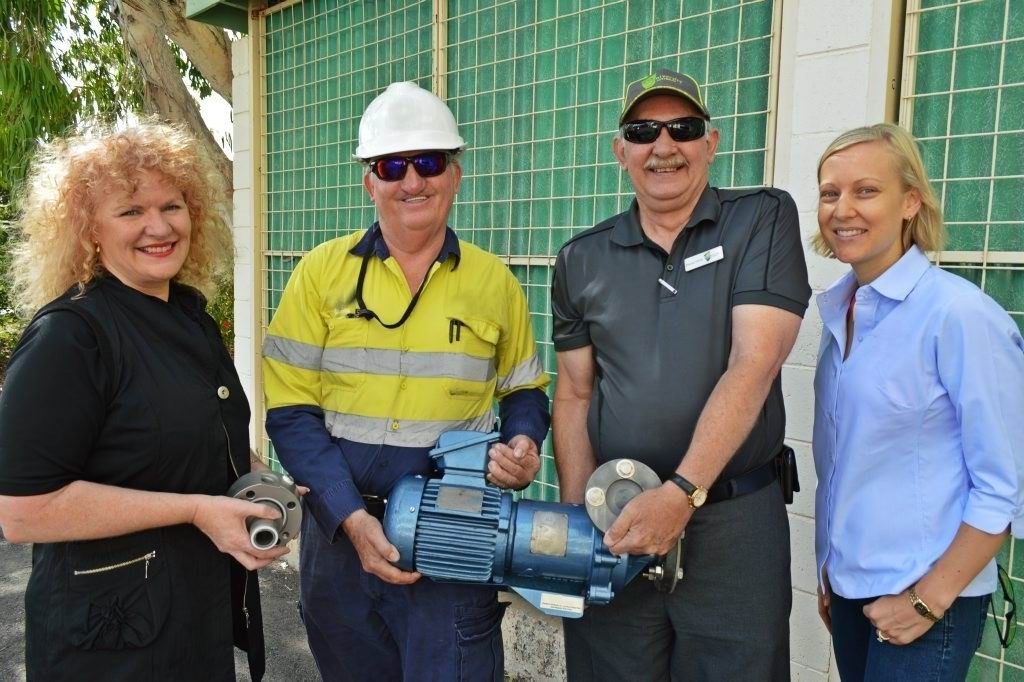
关于Kaysen
我们的基础
KAYSEN全球成功故事的基础是数十年来的工程专业知识,对应用的深刻理解和不断创新的高质量产品。因此,该公司集团不断投资于研发。KAYSEN在全球12个生产基地中也具有高度的垂直整合,从而确保为客户提供*的质量水平,并确保我们不受供应商市场波动的影响。
我们的宗旨
集成在精心设计的解决方案中的模块化KAYSEN系列,使我们各行各业的客户可以随时随地在其生产过程中实现*的安全性和效率。
对我们而言,与客户的亲近意味着与客户一起寻找适合个人需求的正确解决方案。个人,实用的建议和流畅的项目处理与我们全球客户服务一样,都是我们提供的服务的一部分。
我们的承诺
我们热情地致力于为每个客户选择合适的泵,可持续且具有成本效益的解决方案。
在90多个国家/地区,我们自己的销售,生产和服务公司的大约3,500名员工每天都在努力为每种产品提供快速可靠的服务。由于KAYSEN泵业作为全球市场*的地位,意味着对*产品和服务的持续承诺以及对负责任的思维和行动的义务。
Our foundation
KAYSEN's global success story is based on decades of engineering expertise, a deep understanding of applications and continuous innovation of high-quality products. As a result, the company group continuously invests in research and development. KAYSEN also has a high degree of vertical integration in 12 production bases around the world, thus ensuring to provide customers with an excellent level of quality and ensuring that we are not affected by supplier market fluctuations.
Our aim
The modular KAYSEN series integrated in carefully designed solutions enables our customers from all walks of life to achieve maximum safety and efficiency in their production processes anytime, anywhere.
For us, closeness to customers means working with customers to find the right solution for their individual needs. Personal, practical advice and smooth project handling are all part of the service we provide, just like our global customer service.
Our promise
We are passionately committed to choosing the right pump for each customer, sustainable and cost-effective solution.
In more than 90 countries, approximately 3,500 employees of our own sales, production and service companies work hard every day to provide fast and reliable service for each product. The status of KAYSEN Pumps as a global market leader implies a continuous commitment to excellent products and services and an obligation to responsible thinking and action.





